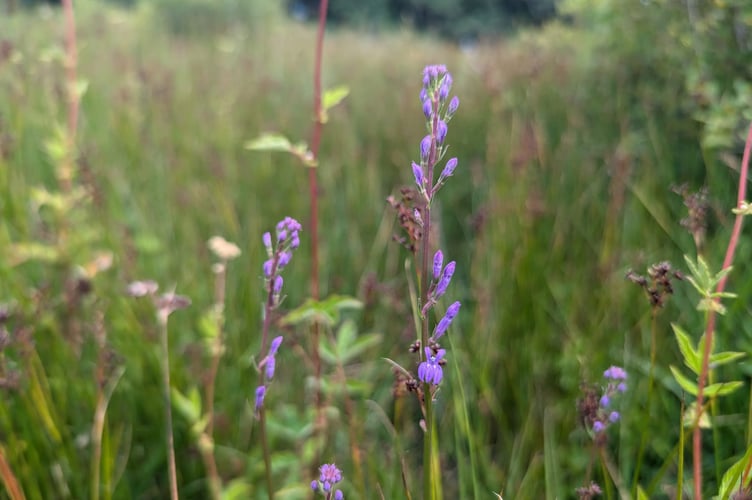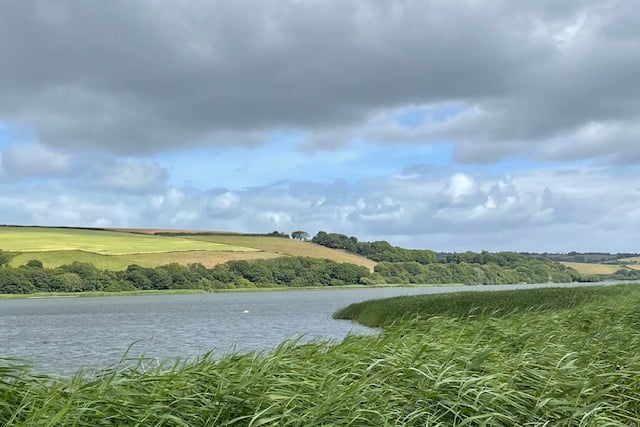Throughout the year, but particularly in the Spring and Summer, I am involved in a number of different bird and plant surveys of the local Leys, the Estuary and of Andrew’s Wood.
At Slapton, the number of singing cetti’s warblers and cirl buntings is pretty constant, but the breeding success of the mute swans, great crested grebes and even the herons is another matter.
Last year there was a good number of successful swan nests on the Lower Ley. In June there were over thirty cygnets, and in September there were twenty still surviving. Cygnets have a number of predators, obviously foxes, and, when they are younger, even herons, but the biggest factor affecting their survival is the availability of suitable water-weed (macrophytes). To fledge properly and develop their flight feathers sufficiently to fly, they need to eat a range of plants.
Early this year there were still a fair number of last year’s cygnets on the Ley, but then their numbers started to drop. Whether some managed to fly out or swim out via the sea I don’t know, but, in early April, the final two were to be found dead on the back slope near to Torcross. They had clearly starved to death. The very heavy rains had raised the water levels in the Ley so high, that the cygnets couldn’t reach down far enough into the water to reach the weed.
Soon after, mute swans started to build new nests. In May the first brood of four hatched and were to be seen with their parents swimming together in Ireland Bay. Sadly, they only survived a few days. Most of the other swan nests have since been abandoned, but, in early June, a brood of eight was successfully hatched in Stokeley Bay. I was alarmed to see, however, that, on the whole of Slapton Ley, there were only another six adult swans. I was even more alarmed to discover twenty adults on Beesands Ley. A rising number of swans there normally signals issues with food at Slapton and, sure enough, the eight cygnets at Stokeley soon disappeared. At the end of July, the number of adult swans at Beesands had risen to forty, joined by nine, still small, but apparently thriving cygnets. Two Leys so close but so different.
There is a happier story to tell of the great crested grebes. Last year the July storms washed away all the grebe nests on Slapton Ley and no young were born. At my last count there were five successful broods this year, with a total of ten young, and there seem to be lots of small fish to feed them. Not the thirty we have had in some years, but a good number.
In the heronry two of the three nests were abandoned, but two young have successfully fledged and flown from the third.
At Andrew’s Wood, July is the month for our annual plant survey. This year there was little doubt that the exceptional levels of rain has benefited the grasses and sedge to the detriment of the wider flora. The marsh orchids had a poor year, and in July there was almost no fleabane in flower, which is normally a marvellous sight in the large field acquired by the Trust just some fifteen years ago, which was barren apart from grass, and which Jackie spent so much time restoring.
Gordon recently wrote a beautiful article about Jackie and her sad early death, and showed a picture of the bench that has been placed in the Wood in her memory. For me, when I am in Andrew’s Wood, she is still all around me.
Jackie’s Bench is not the only memorial bench in Andrew’s Wood. There is another in Bluebell Clearing. partly in memory to Bryan. Bryan was a resident of Slapton and introduced me to Gordon, twenty-one years ago; my life hasn’t been quite the same since.
August is our month to count the famous Heath Lobelia. Andrew’s Wood is one of only five sites in the UK where this plant occurs, and it has by far the greatest number. Unfortunately, over last few years the numbers have fallen quite dramatically, probably because all the rains have benefited the grasses to such an extent that they are swamping the lobelia. We shall see if any of the remedial actions, such as cattle grazing, have had any effect.
Some years we have carried out the lobelia count surrounded by hundreds of Common Blue butterflies: a wonder. I am not expecting any such wonder this year. Apart from the grasshoppers and crickets, which appear to be thriving, the wet winter/spring have been terrible for the butterfly and insect population, especially, it would seem, for the Common Blue.







.jpg?width=209&height=140&crop=209:145,smart&quality=75)
